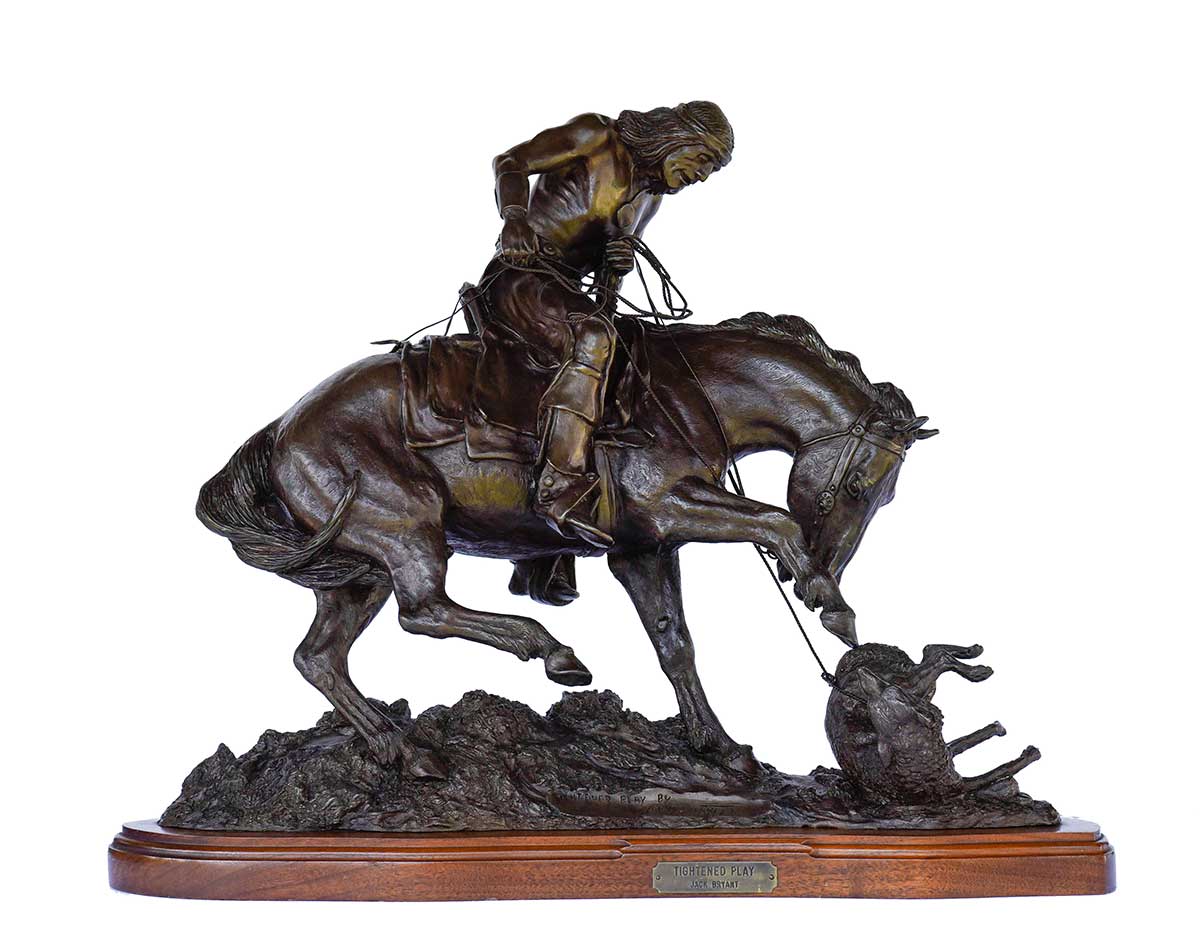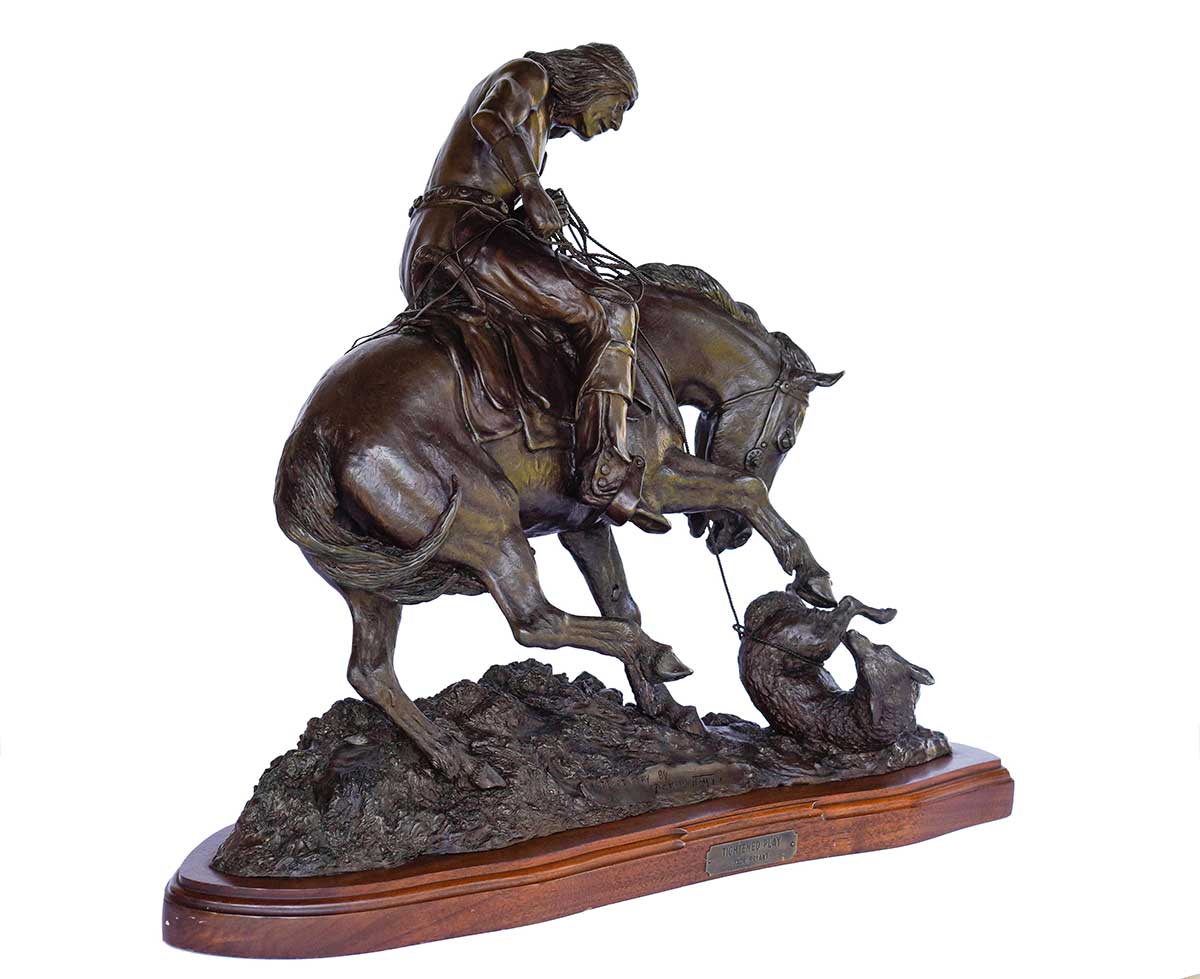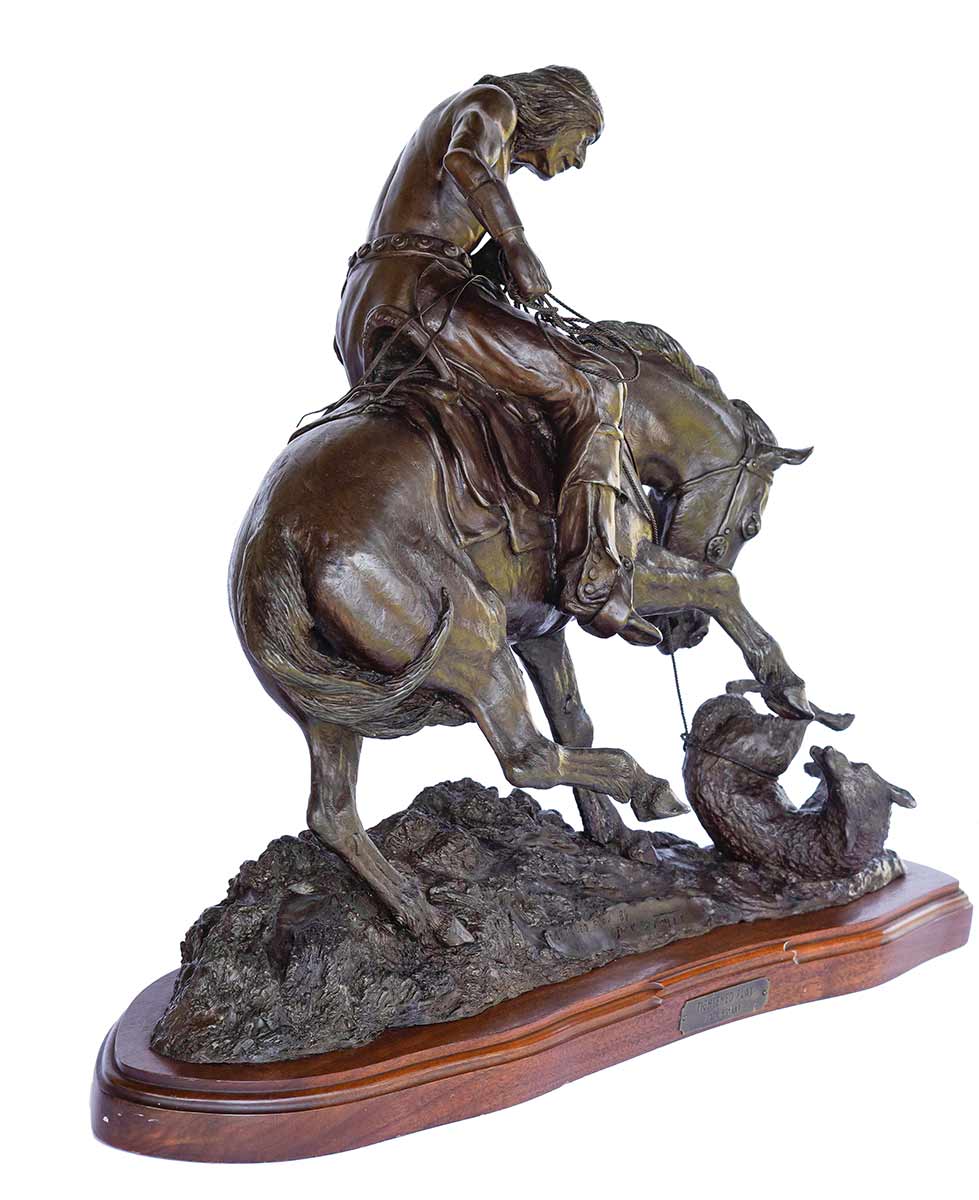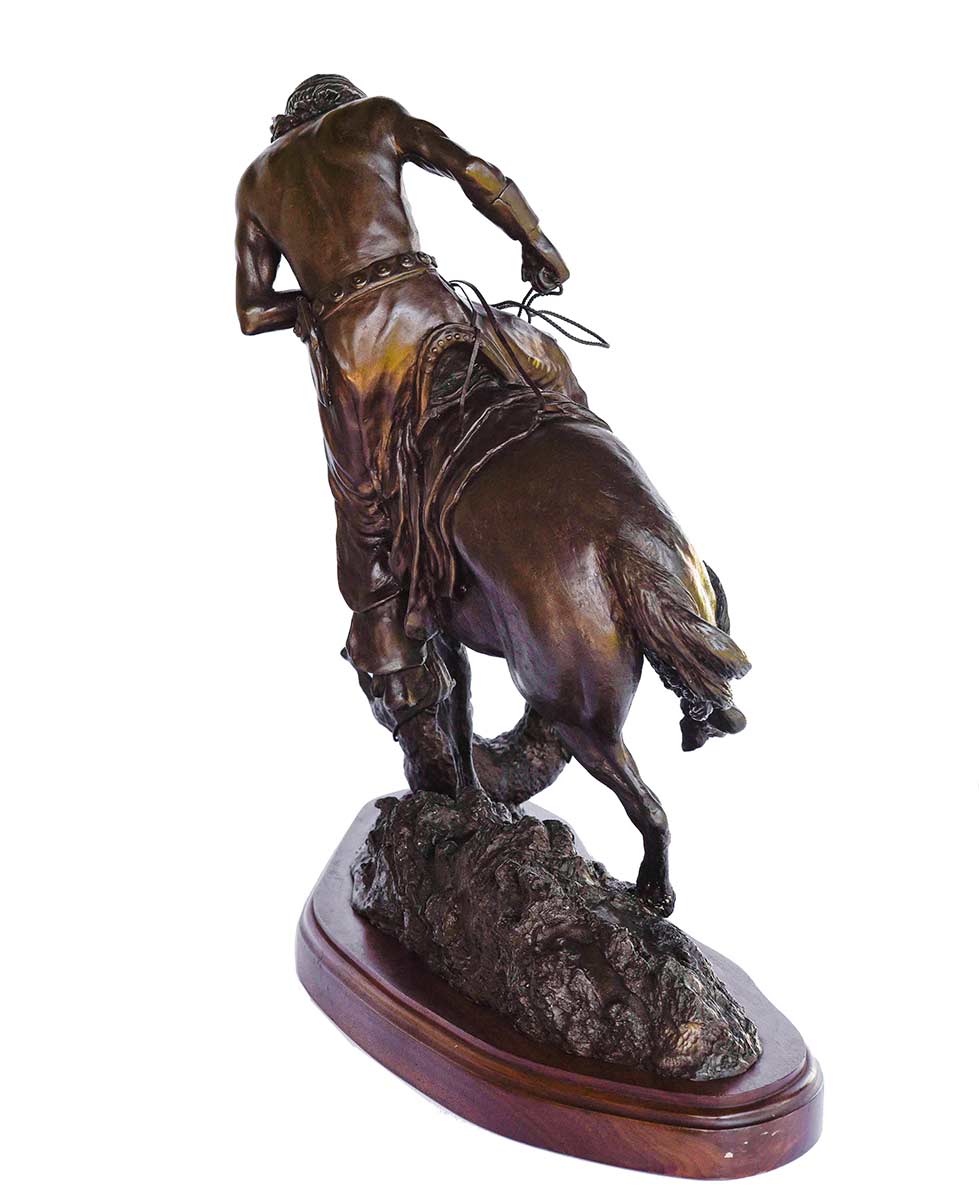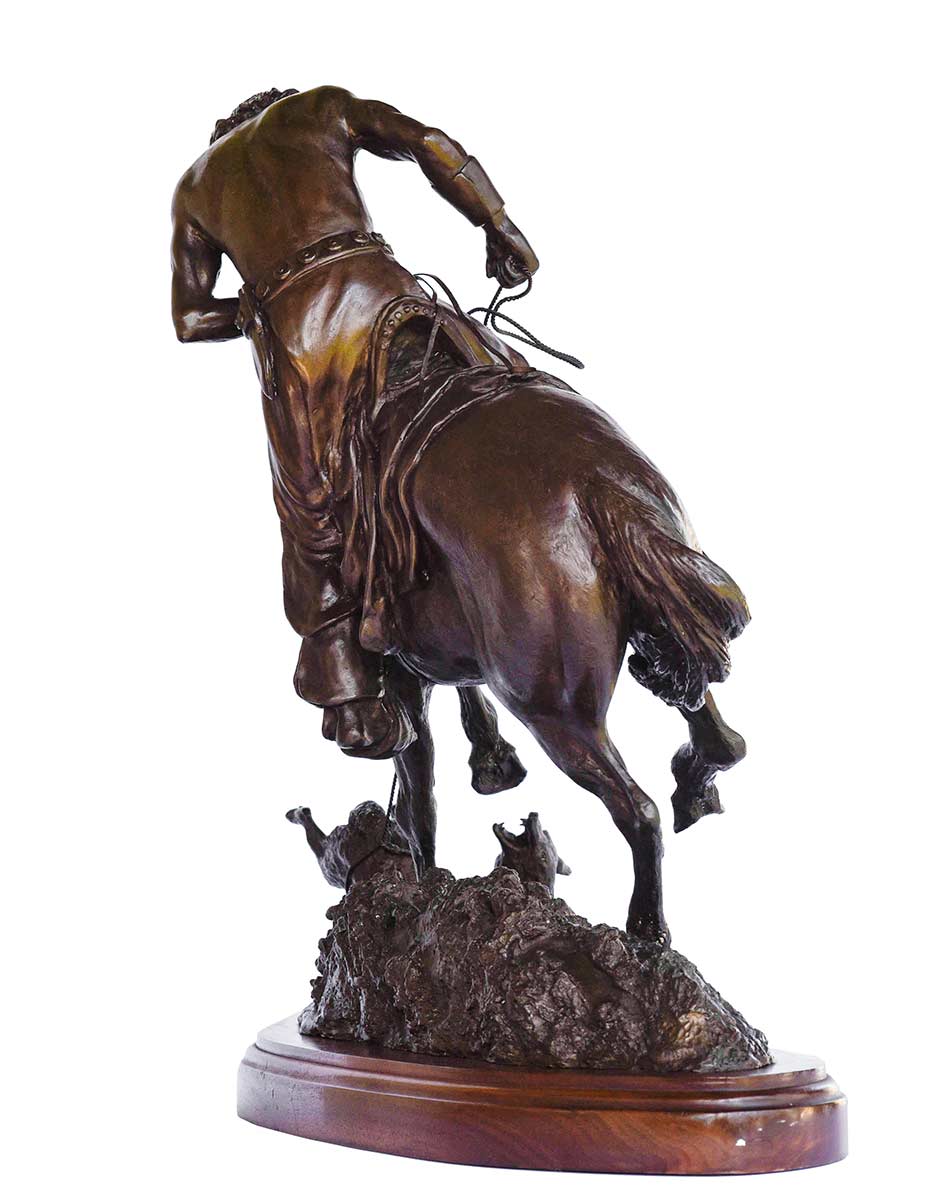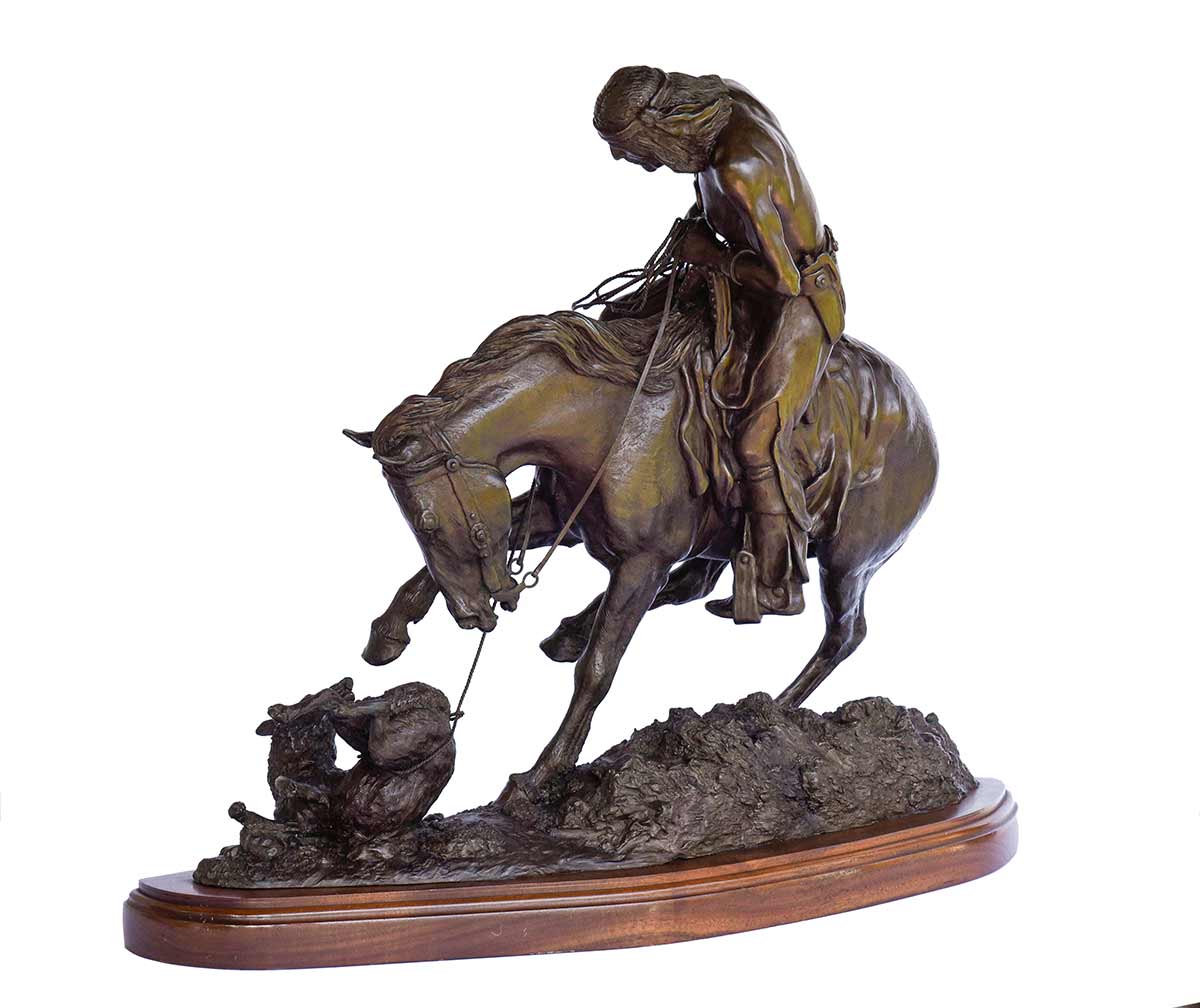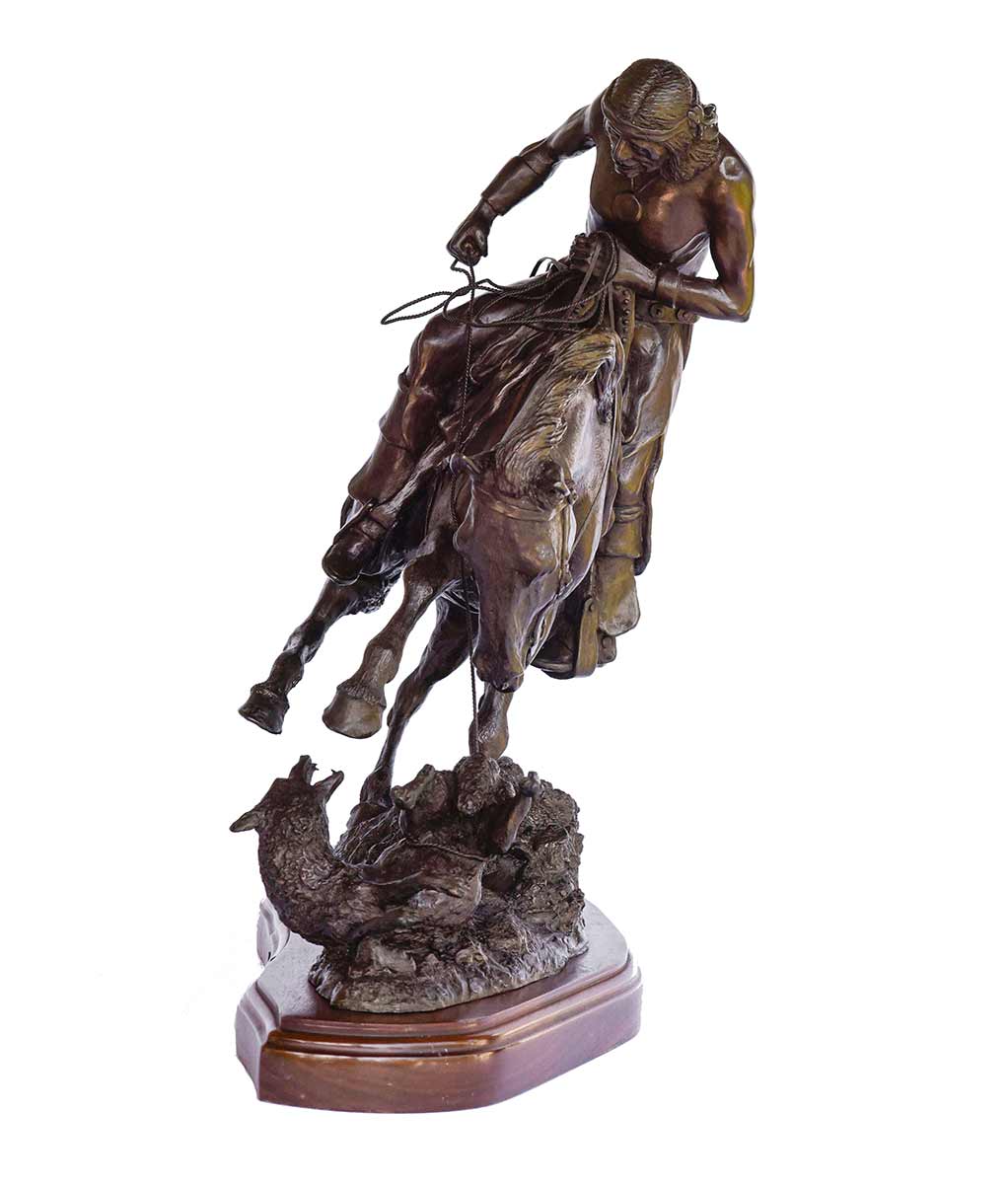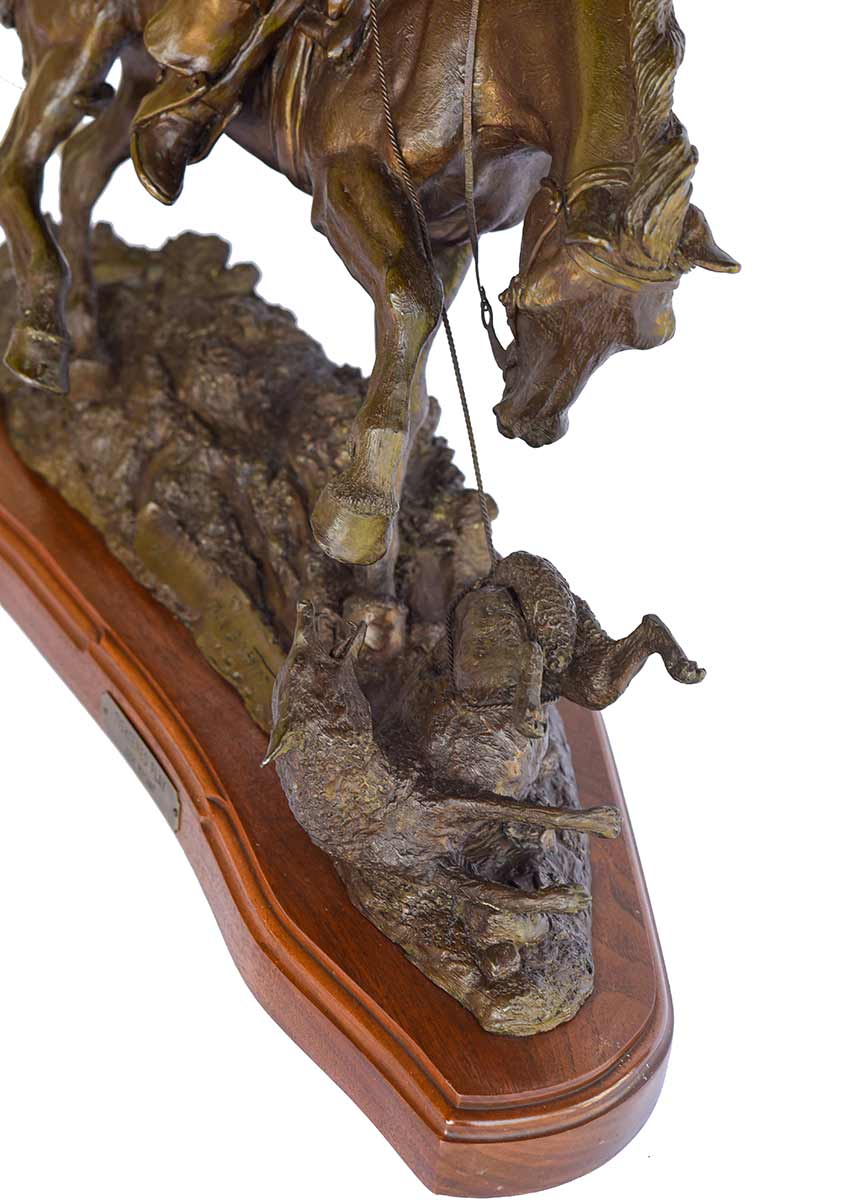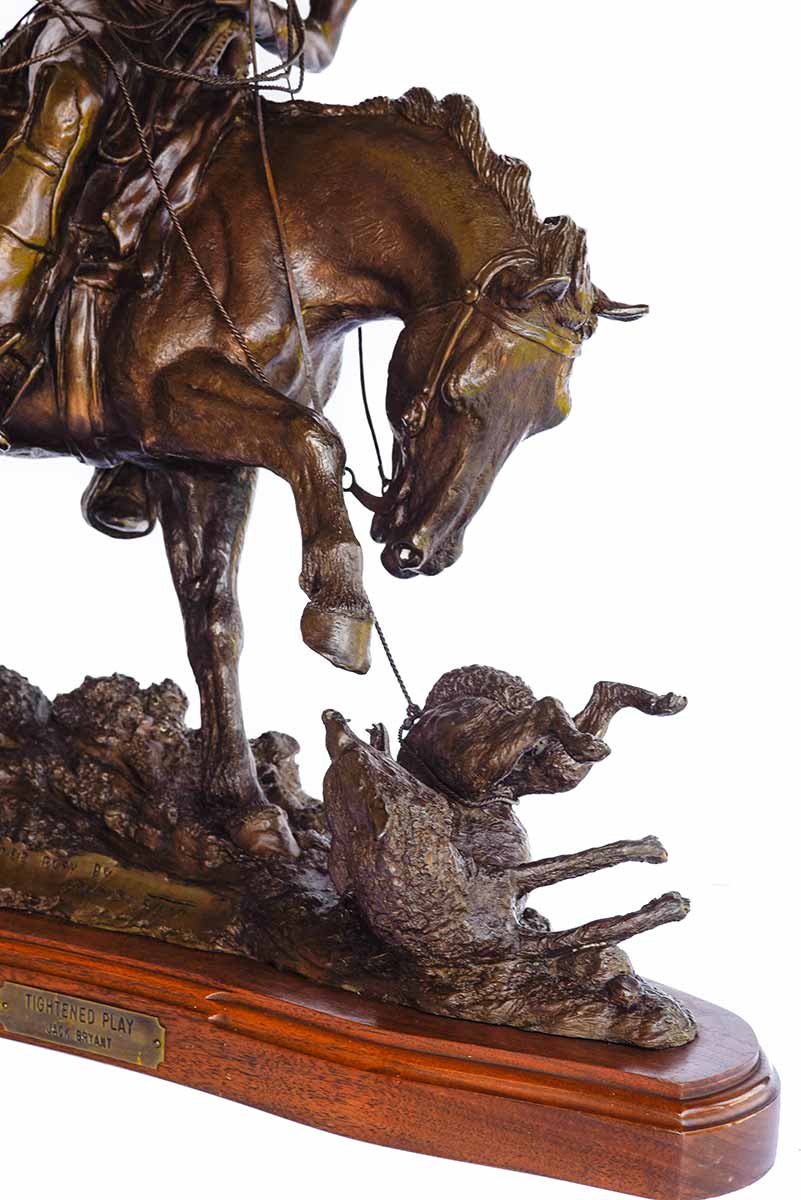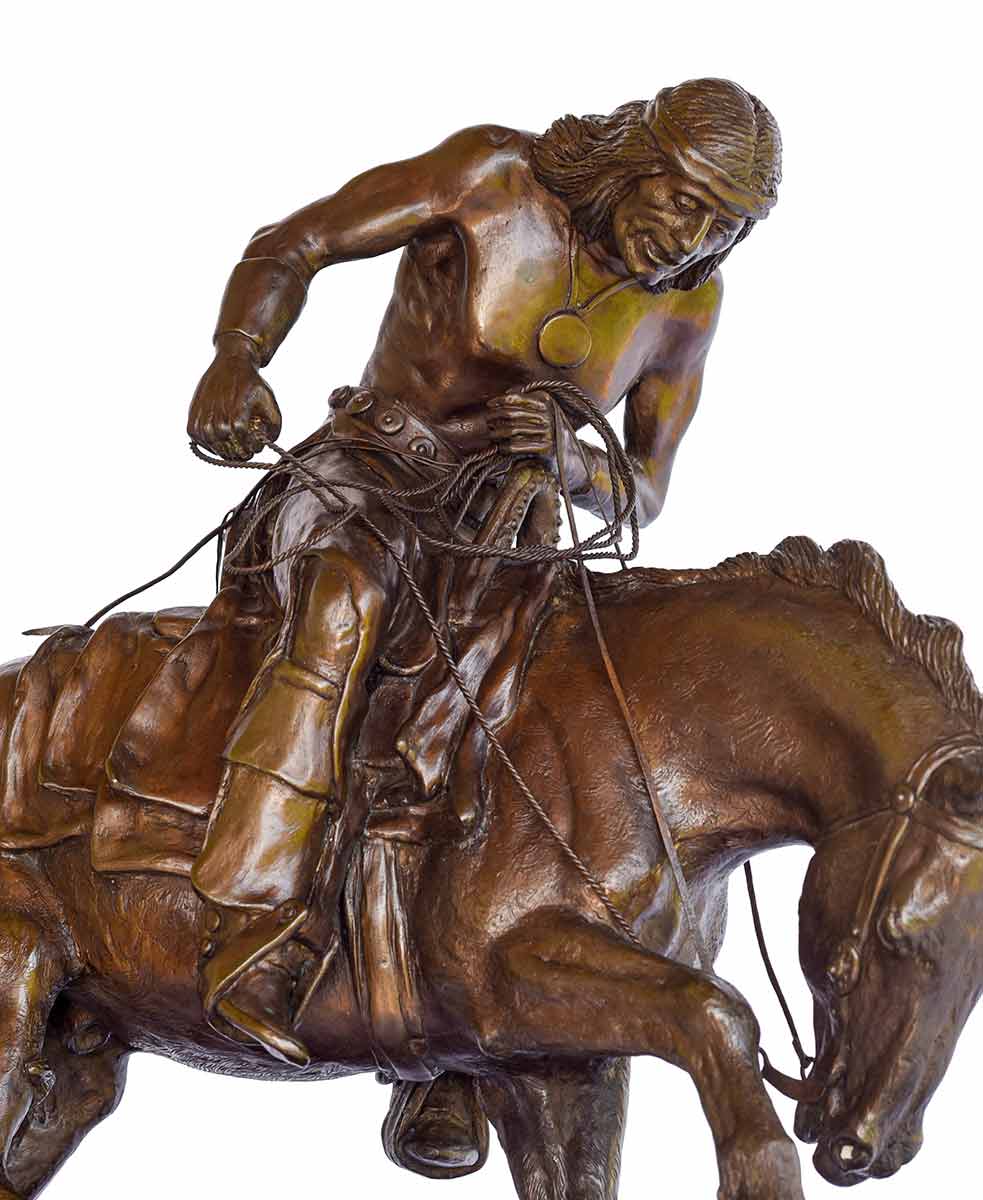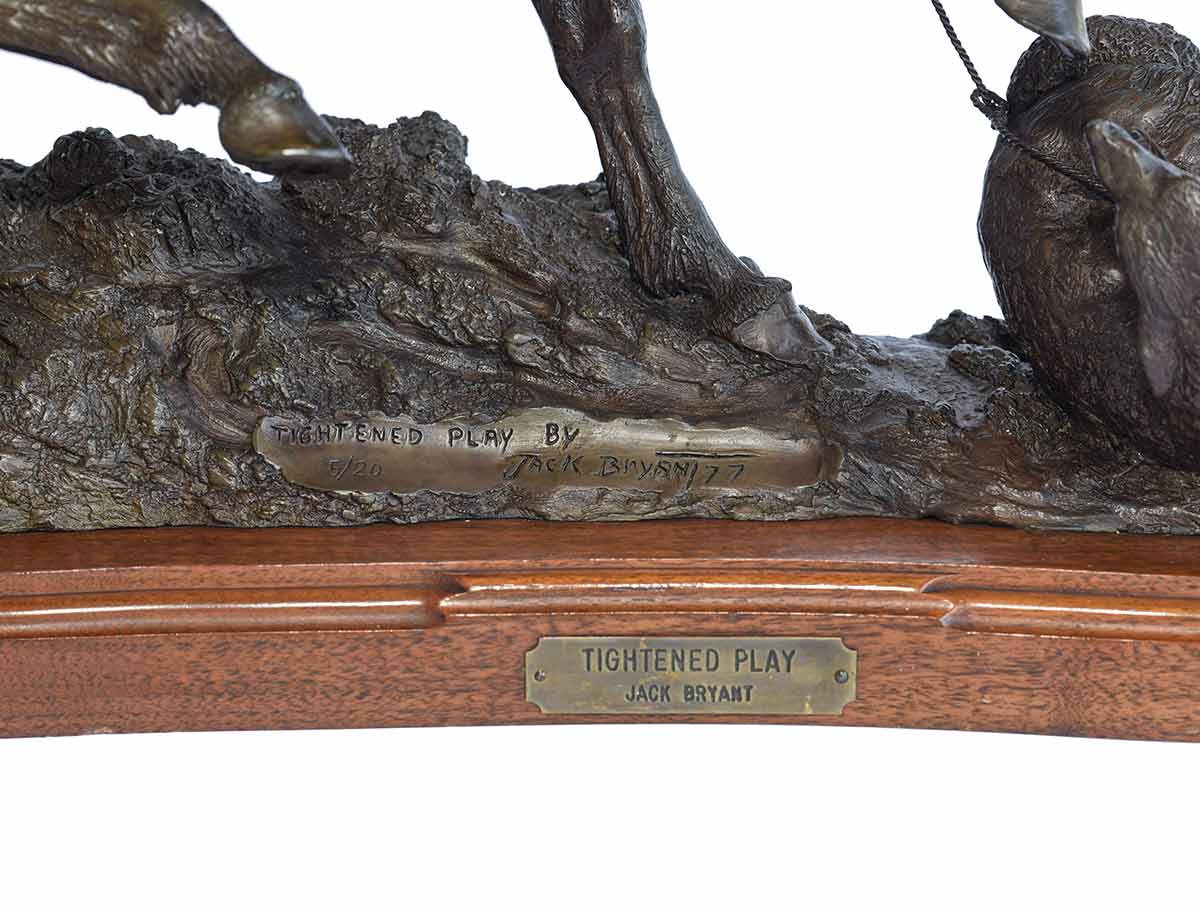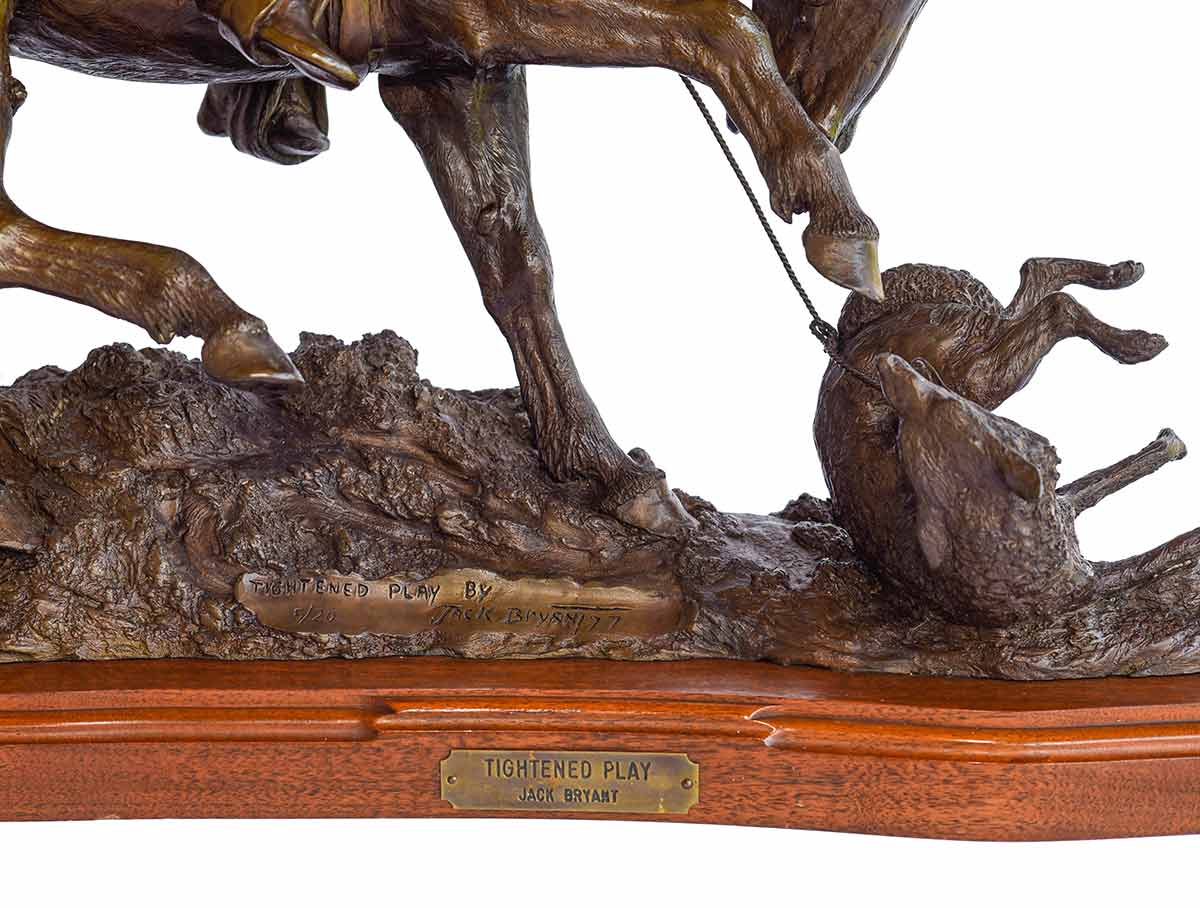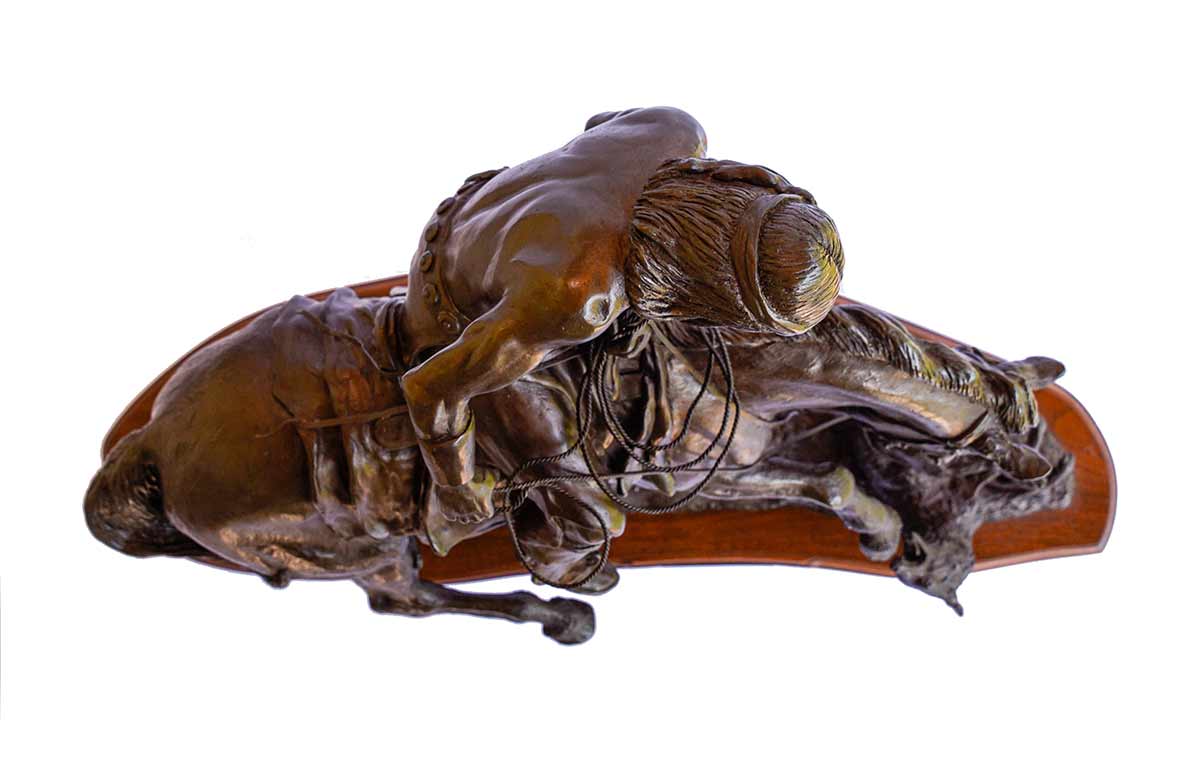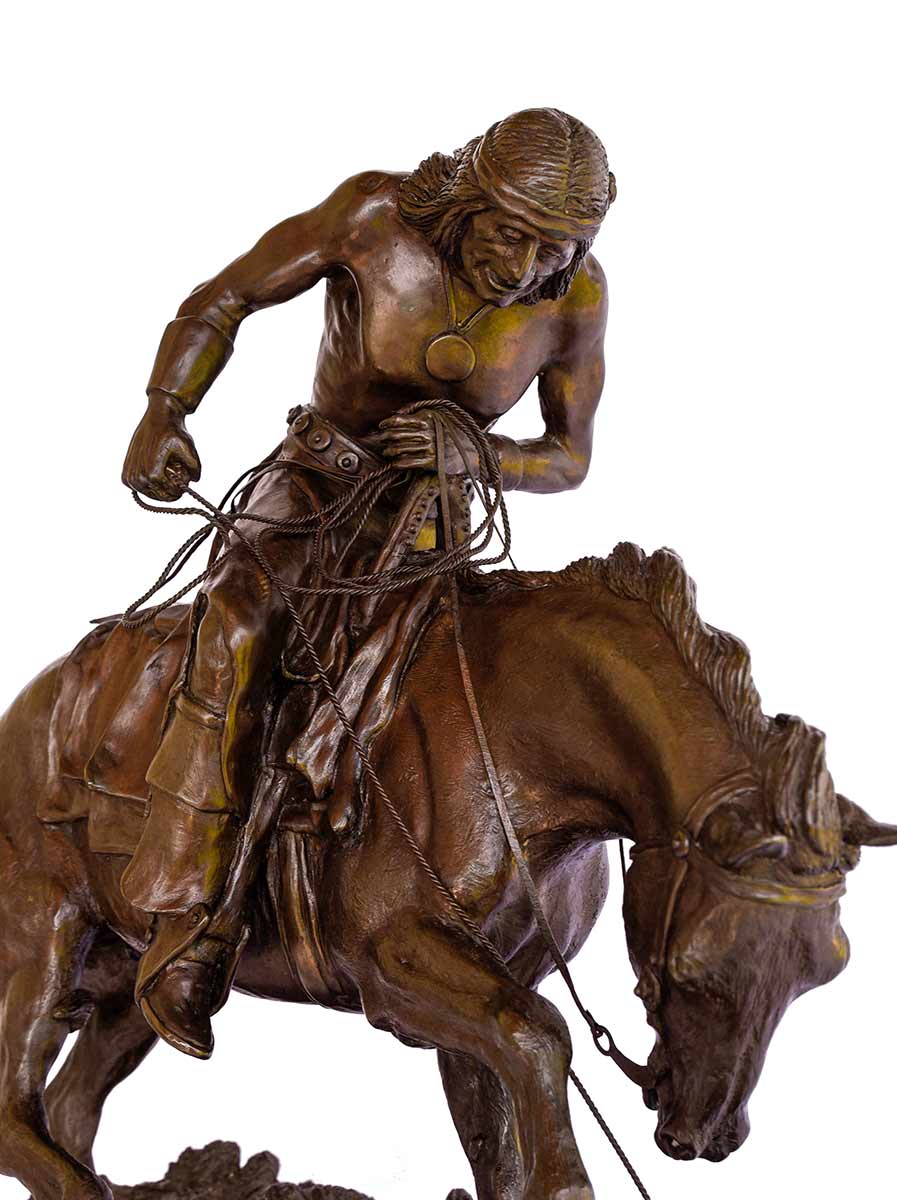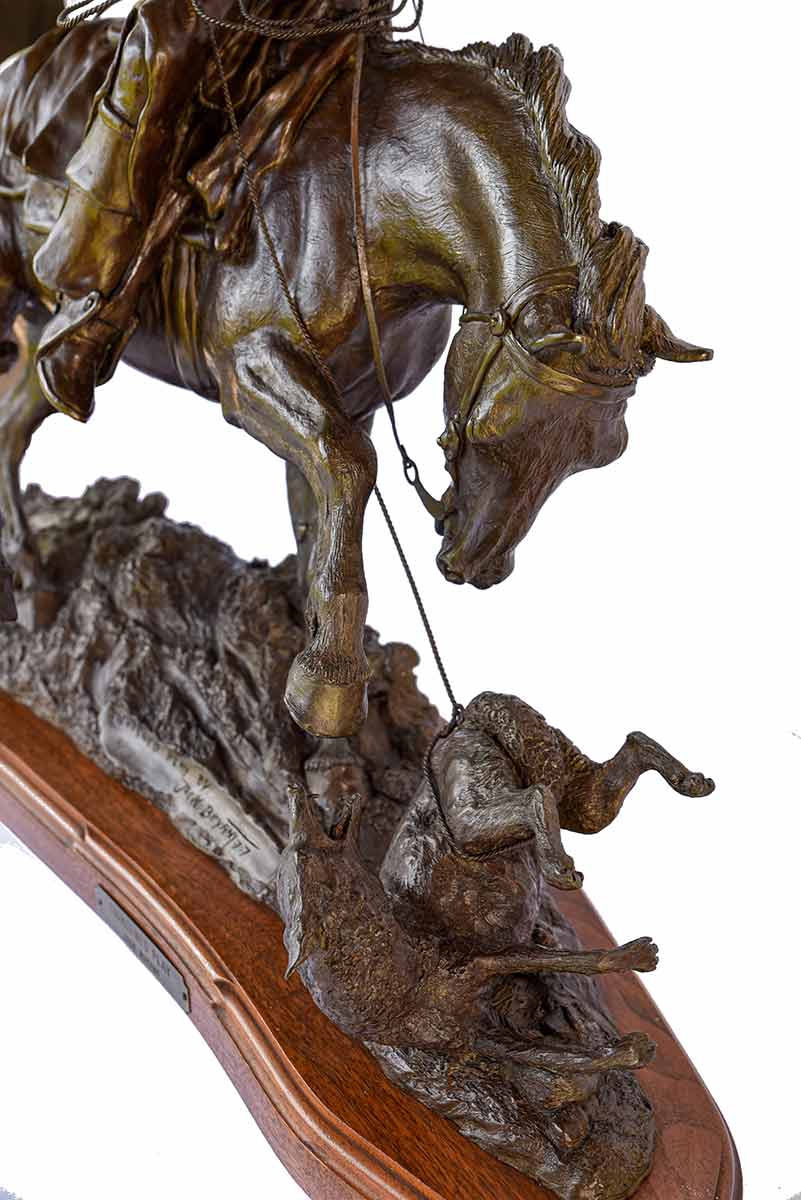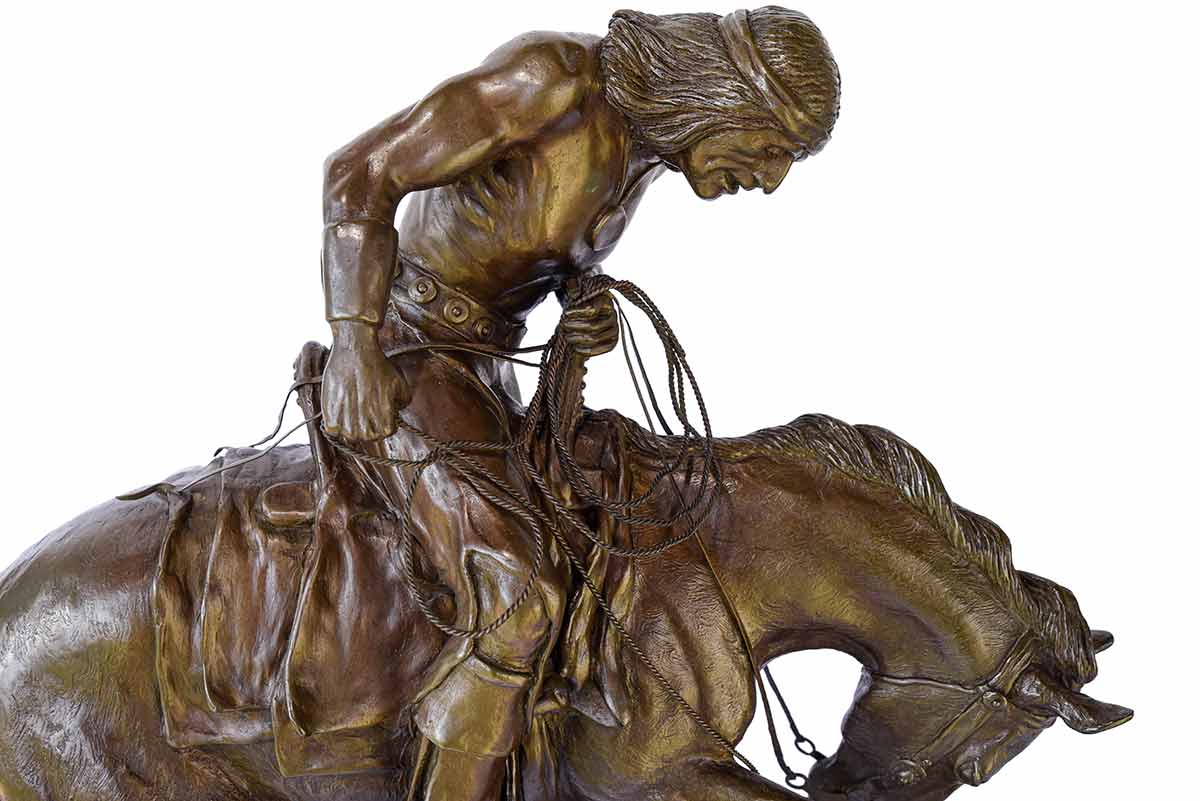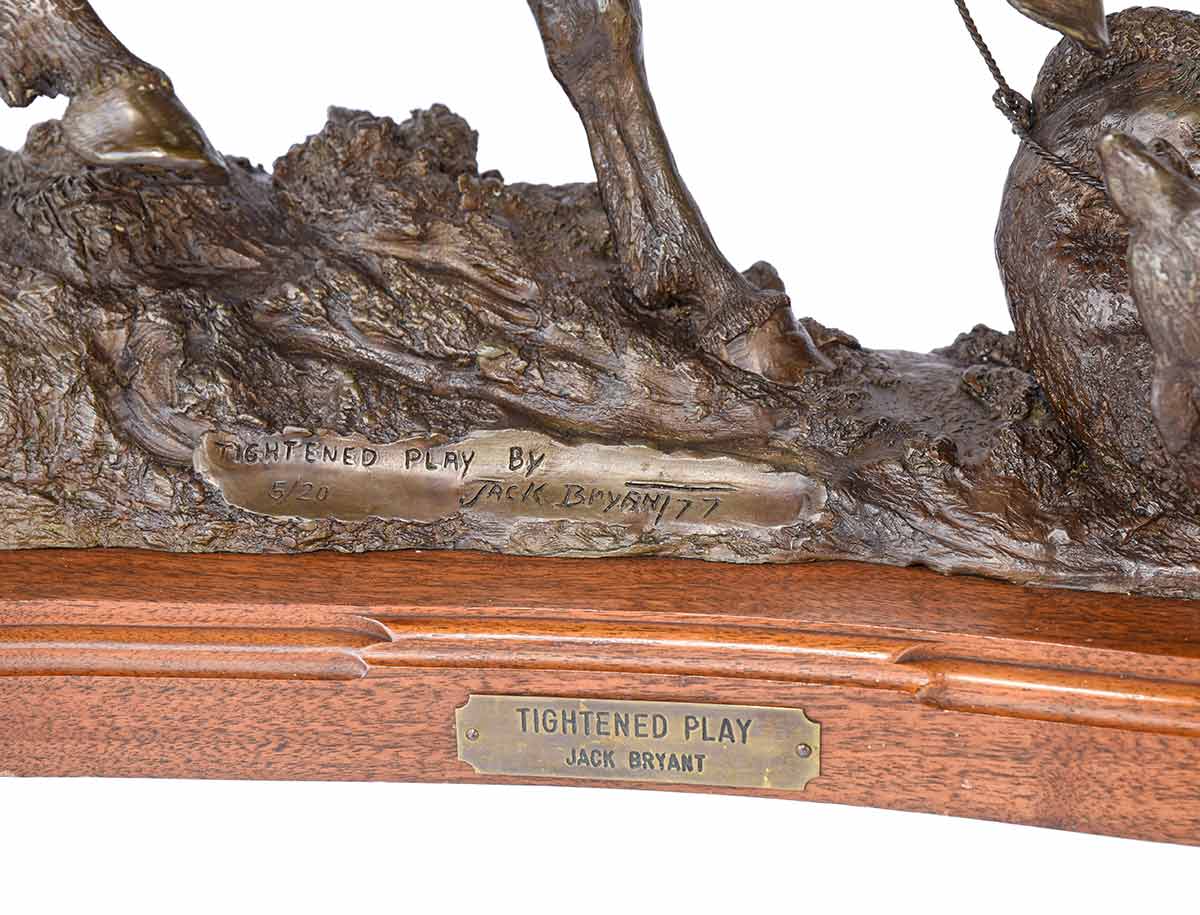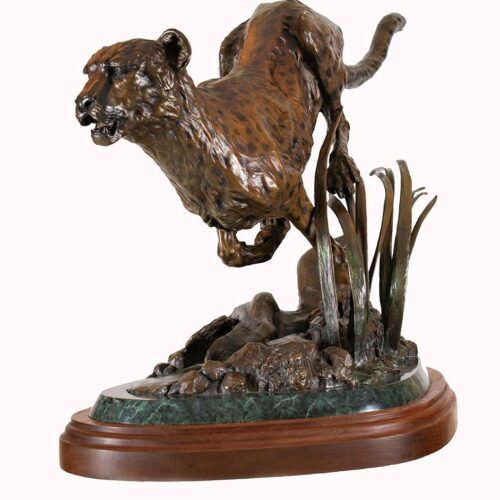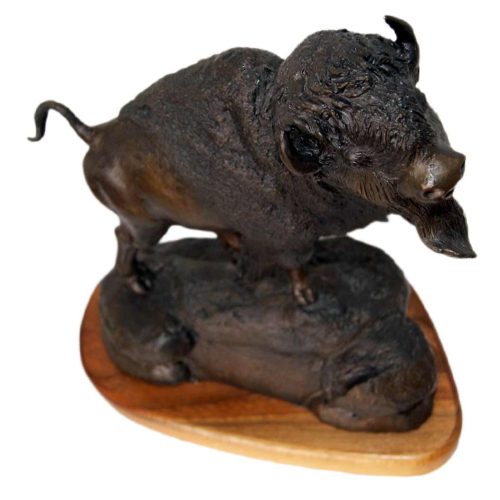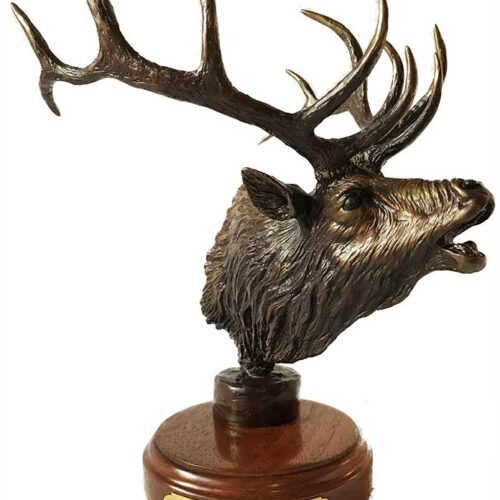Tightened play
by
Jack Bryant
Height: 20″
Width: 23″
Depth 9″
Weight (Approx): 70 lbs
Edition Numbers: 5/20 – 1977
Wolf roping is a traditional practice among some Native American tribes, particularly those of the Plains regions like the Lakota, Blackfoot, and Crow. Unlike modern rodeo roping where cattle are the target, wolf roping involved the challenging and dangerous task of capturing wolves using only a rope.
In traditional Native American culture, wolves held significant spiritual and symbolic importance. They were respected as intelligent hunters, family-oriented beings, and powerful spiritual entities. Wolf roping wasn’t typically practiced as a sport or entertainment but served several practical and ceremonial purposes:
- Hunting Skill Development: Wolf roping demonstrated exceptional horsemanship, bravery, and hunting prowess. Successfully roping a wolf required tremendous skill since wolves are faster, more agile, and more dangerous than cattle.
- Spiritual Significance: For many tribes, capturing a wolf without killing it represented a connection with the animal’s spirit. Some practices involved capturing wolves for ceremonial purposes, then releasing them, symbolizing respect for the animal’s power.
- Coming-of-Age Rituals: In some tribes, successfully roping a wolf might have been part of warrior initiation ceremonies or coming-of-age rituals, proving a young man’s courage and skill.
- Practical Purpose: Sometimes wolves would prey on tribal livestock or pose threats to camps. Wolf roping offered a way to remove problem wolves without killing them, reflecting the respectful relationship many tribes maintained with wildlife.
The practice represents the complex relationship Native Americans had with wolves – one of deep respect and spiritual connection, rather than simple domination. This contrasts with European-American attitudes that often viewed wolves primarily as threats to be eliminated.
It’s worth noting that wolf roping is rarely if ever practiced today due to conservation laws, changing cultural practices, and the endangered status of wolves in many regions.

